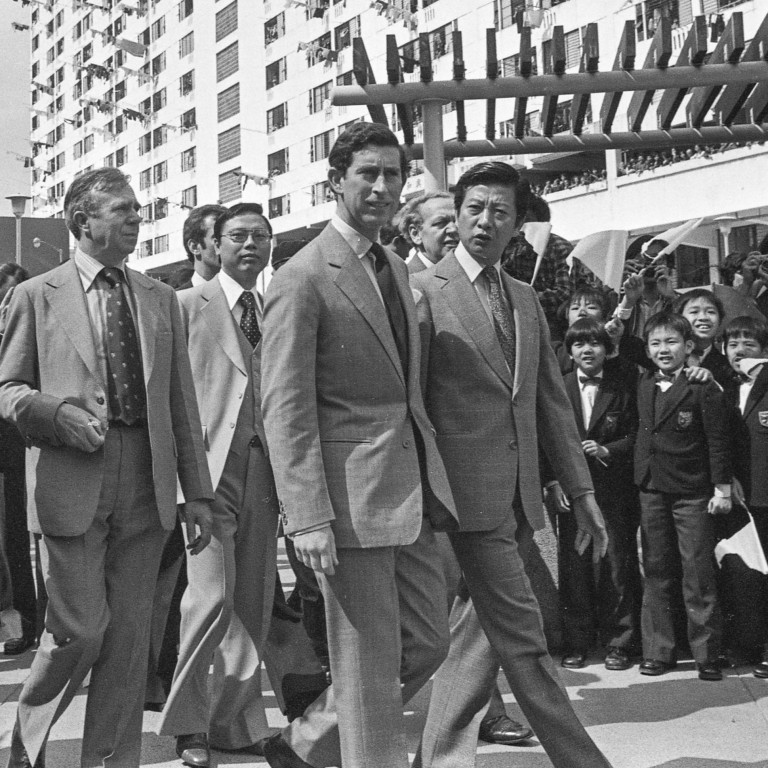
The day a Hong Kong fishmonger stuck his hand out to future British King Charles, who shook it ‘without hesitation’
- Coronation of King Charles has Hongkongers recalling highlights of his visits as Prince of Wales
- In Sai Wan’s famous ‘dried seafood street’, shop owners still keep photos of Charles’ 1989 visit
Donald Liao Poon-huai has not forgotten the day he accompanied Britain’s King Charles, when he was Prince of Wales, on a tour of Lek Yuen Estate in Sha Tin in 1979.
“As we were walking through the market stalls, one of the fishmongers, who had just finished cutting up a freshwater fish, thrust his fishy hand across the stall, but the prince, without hesitation, shook his hand,” recalled Liao, now 93. “I wasn’t surprised, but I was impressed with his spontaneity.”
Liao, who was director of housing at the time, said the prince was on his way to leave the area by helicopter.
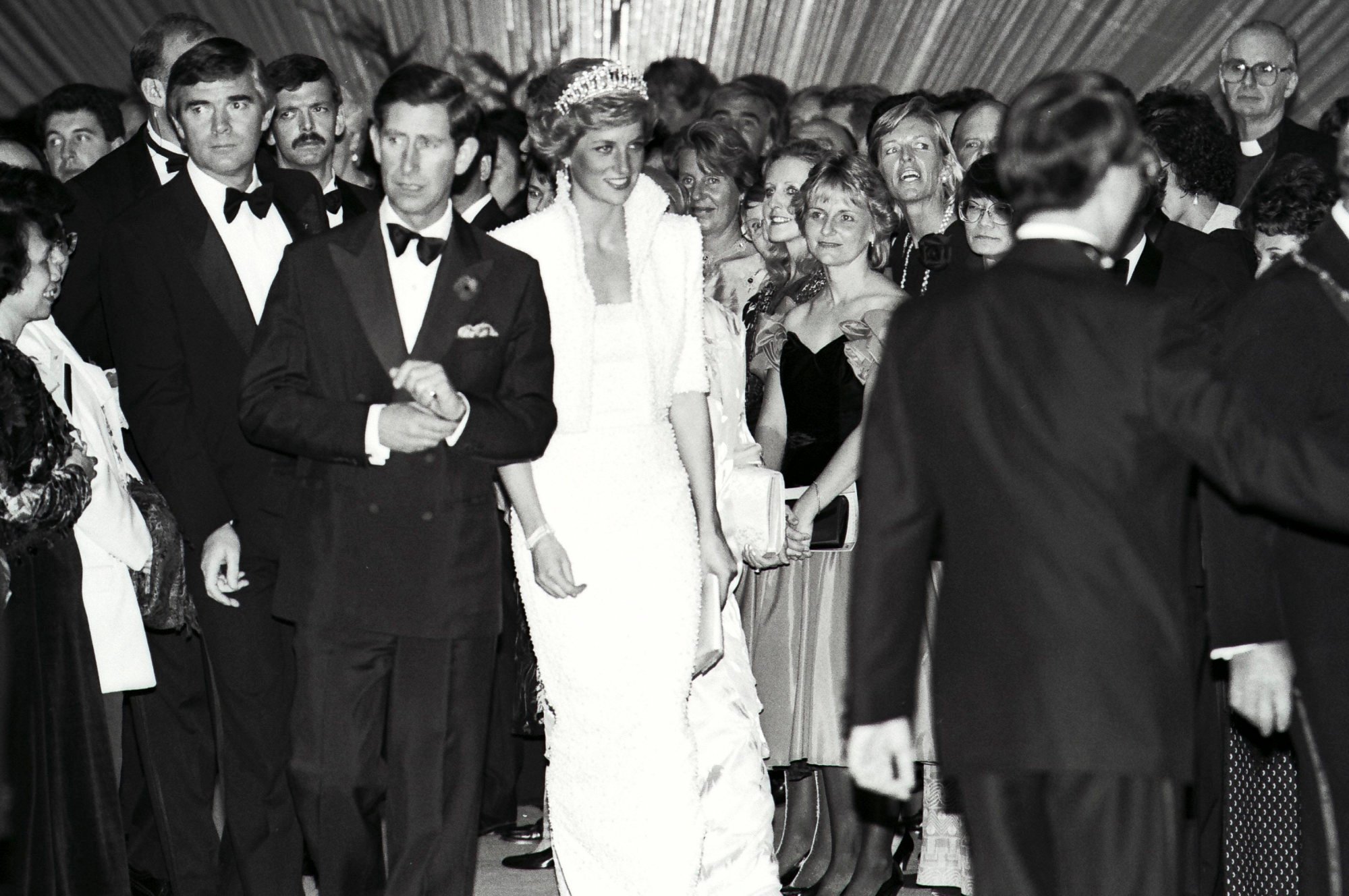
“I can’t remember if he had time to wash his hands. Otherwise, it would’ve been a fishy cockpit!” he added with a chuckle.
Liao, who went on to become secretary of district administration from 1985 to 1989, was among Hongkongers who told the Post how they remembered the Prince of Wales, who will be crowned King Charles on Saturday.
He visited Hong Kong five times before the city was returned to China in 1997. He made solo trips in 1979, 1992 and 1994, and visited once with his then wife, the late Princess Diana, in 1989.
His last visit was as the representative of his mother, Queen Elizabeth, during the handover ceremony.
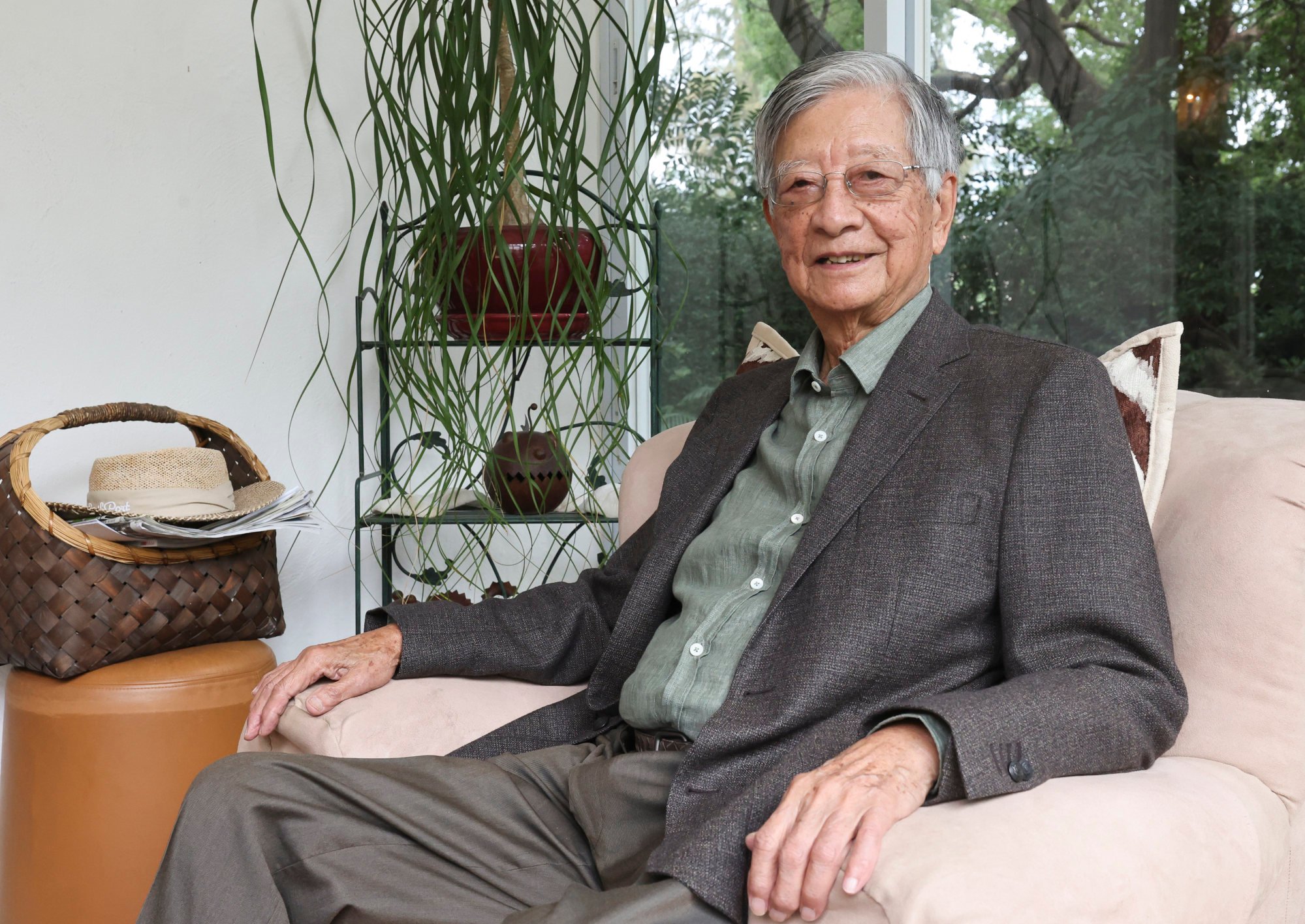
His coronation in London takes place eight months after the queen’s death on September 8 last year.
During his five visits to Hong Kong, King Charles, now 74, met Hongkongers at public housing estates, officiated at the opening of major institutions such as the Hong Kong Cultural Centre and the foundation stone-laying ceremony of the University of Science and Technology. He also visited British military personnel stationed in the city.
Former senior administrative officer Shelley Lee Lai-kuen, 73, who was private secretary to governor Murray MacLehose in 1979, recalled meeting the prince at Flagstaff House, where he stayed during his four-day visit.
Hong Kong residents queue up to honour ‘lady in charge’ Queen Elizabeth
“He still found the time, around 10 minutes, to visit us at the private office,” she said. “On the second day of his visit, he came to say thank you for everything we’d done. On his final day, he gave us photos.”
She received a framed portrait of the prince, signed: “Charles, 1979”.
“I was very touched that even though we weren’t directly involved, he gave us a souvenir,” she said.
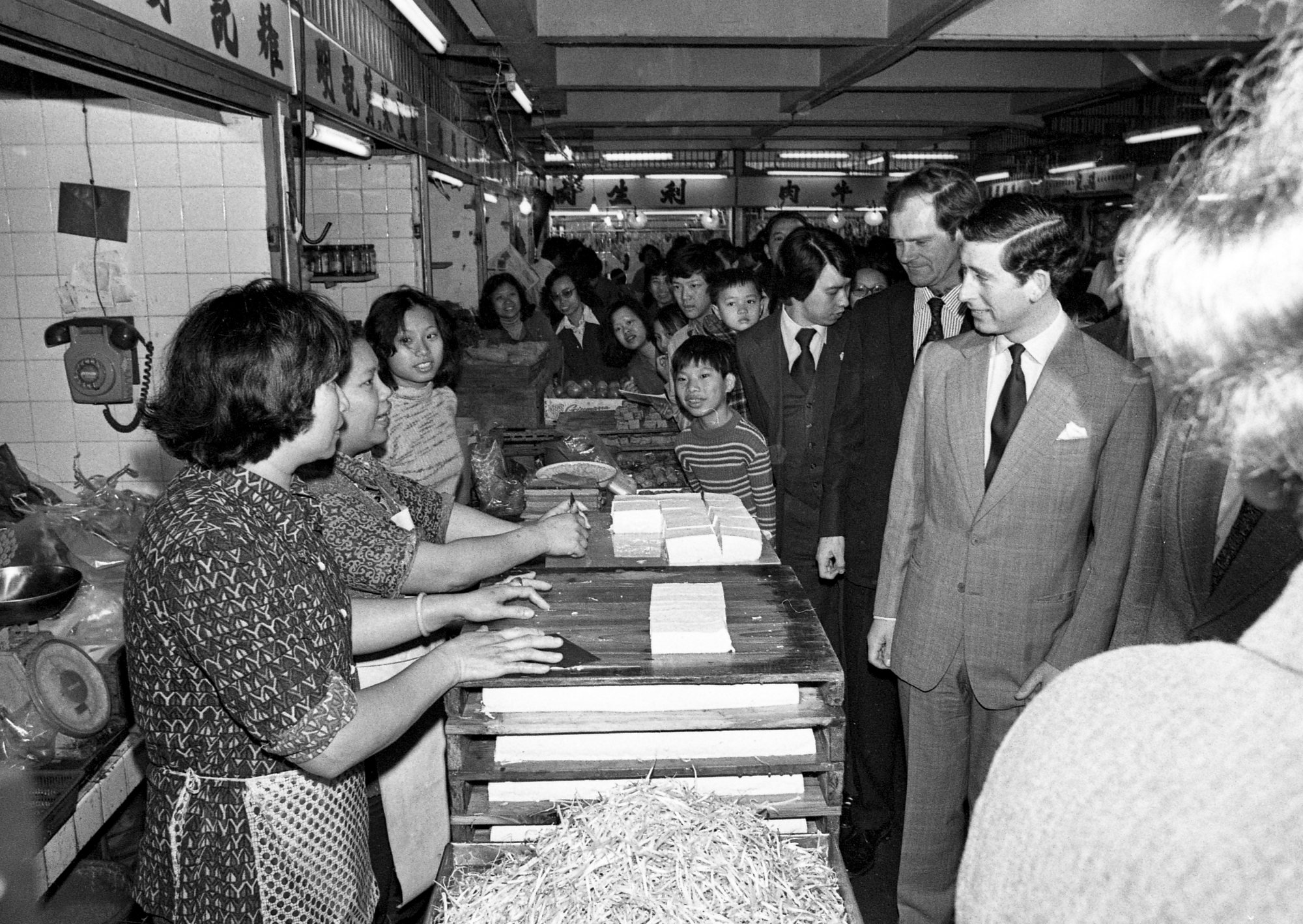
Liao said: “He was very friendly. We travelled in the governor’s Rolls-Royce and exchanged views on architecture.”
He met the prince again during his visit with Princess Diana in 1989. Liao said his retirement as secretary of district administration was delayed by six weeks so that he could organise the programme for the royal visit.
“As public housing was the pride of Hong Kong in those days, it was a must to include a visit to one or two housing estates,” he said.
He was also with the prince on a tour of Bonham Strand West in Sai Wan, famous for traditional Chinese dried seafood and other goods that gave the area a distinctive smell.
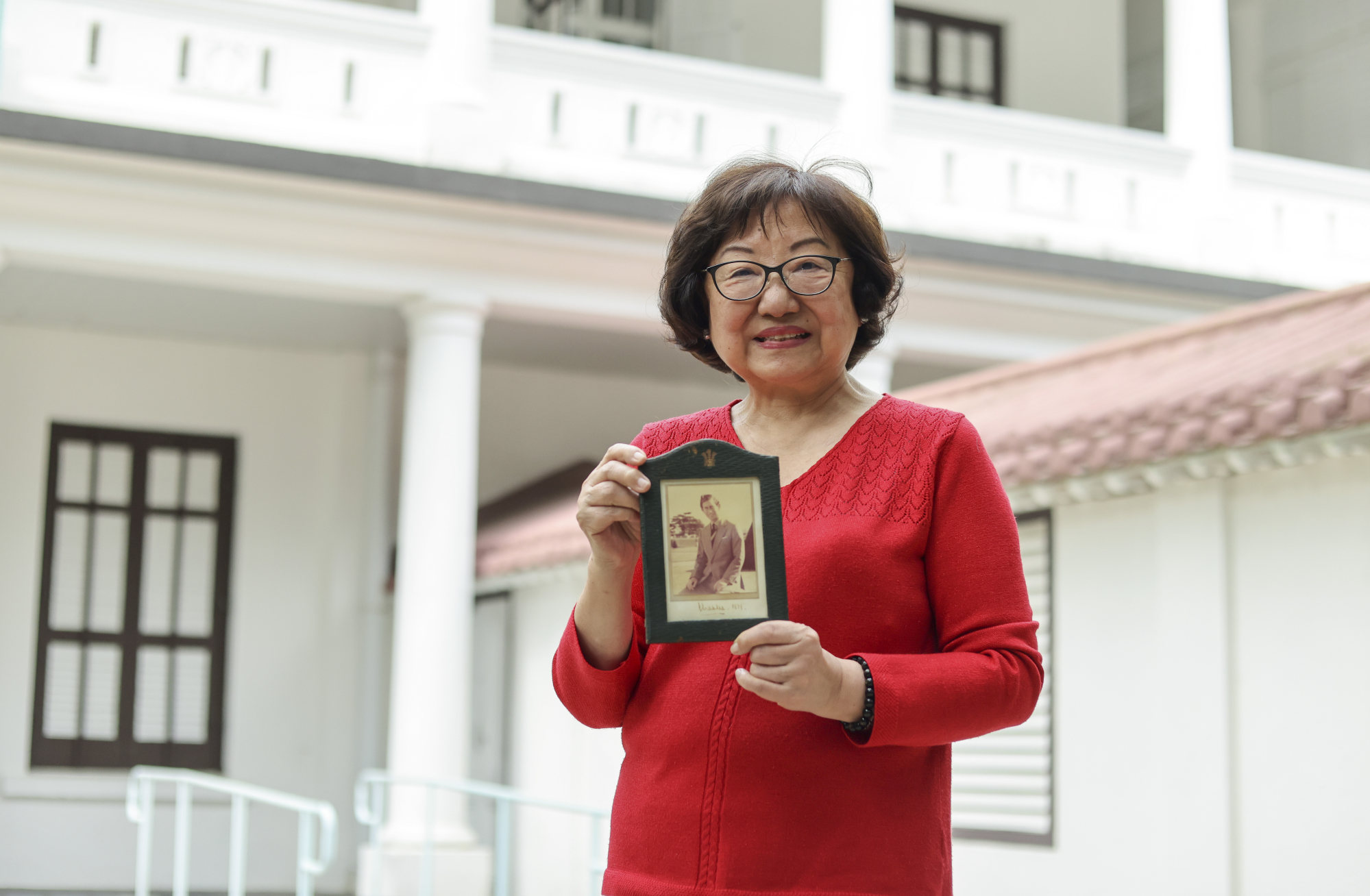
“As he was not going to China, we thought we would find Chinese things in Hong Kong to show him,” Liao said. “We ended up in an old Chinese medicine shop, where the owner offered him dried ginseng.”
When the Post visited the street this week, some shop owners and workers remembered that the prince came with a small entourage and stopped by three shops.
At Pak Cheong Tong, a traditional Chinese medical ingredients shop established in 1929, the owner, a man in his 90s who gave his surname as Tsang, remembered the day well.
He said the prince was with then governor David Wilson and Liao, and they were in his shop for 10 minutes.
A visual guide to the coronation of Britain’s King Charles
“I’d been told about the visit a few months earlier. I put up a banner to welcome him,” he recalled.
Employees at Chiu Kwong Lee Ginseng Firm said the prince stopped there, and it was where Liao remembered the owner offering everyone ginseng.
The workers said the owner, Chiu Kwong-hoi, had died, but a framed photo of the prince’s visit still remained at the shop’s entrance.
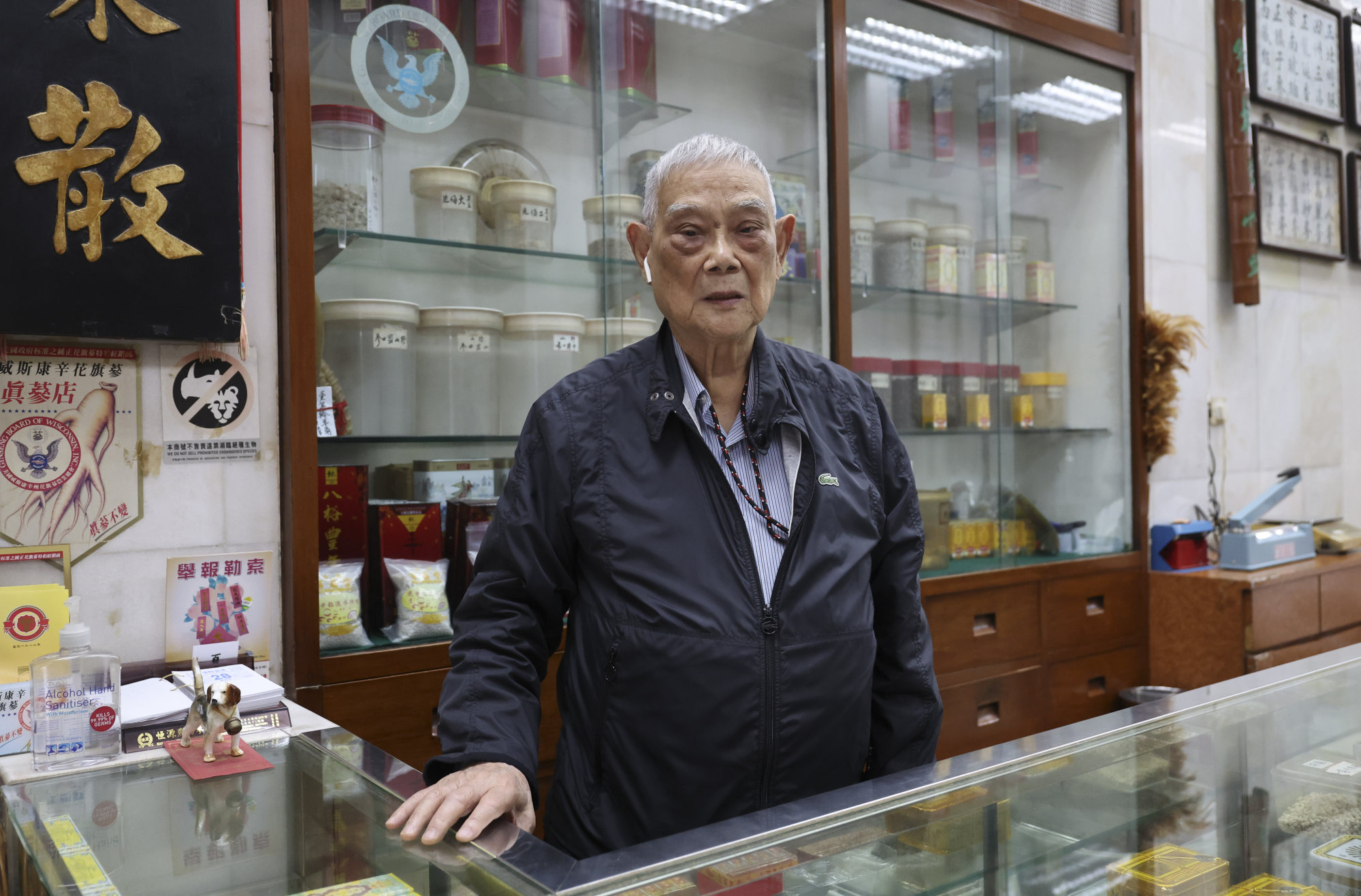
The prince’s last stop was at dried goods store Fook Shing Ho, which has since moved to another location nearby.
The owner declined to comment, but showed the Post a weathered album with photos and clippings of the visit. More photos were displayed in the shop.
The coronation of King Charles will be marked by the British Consulate General in Admiralty with a reception, during which the ceremony from Westminster Abbey will be live-streamed.
What really drove massive outpouring of grief in Hong Kong over queen’s death?
Historian Mark Hampton, an American and associate professor at Lingnan University, said the event was likely to be of limited interest to Hongkongers, as he was less known in the city and worldwide compared with his mother.
“Unlike Queen Elizabeth, who was sovereign for more than four decades of Hong Kong’s time as a crown colony, King Charles was never Hong Kong’s sovereign,” he said.
“His birthday has never been an official Hong Kong holiday, his face was not on Hong Kong currency, his name was not on lease documents in Hong Kong.”

